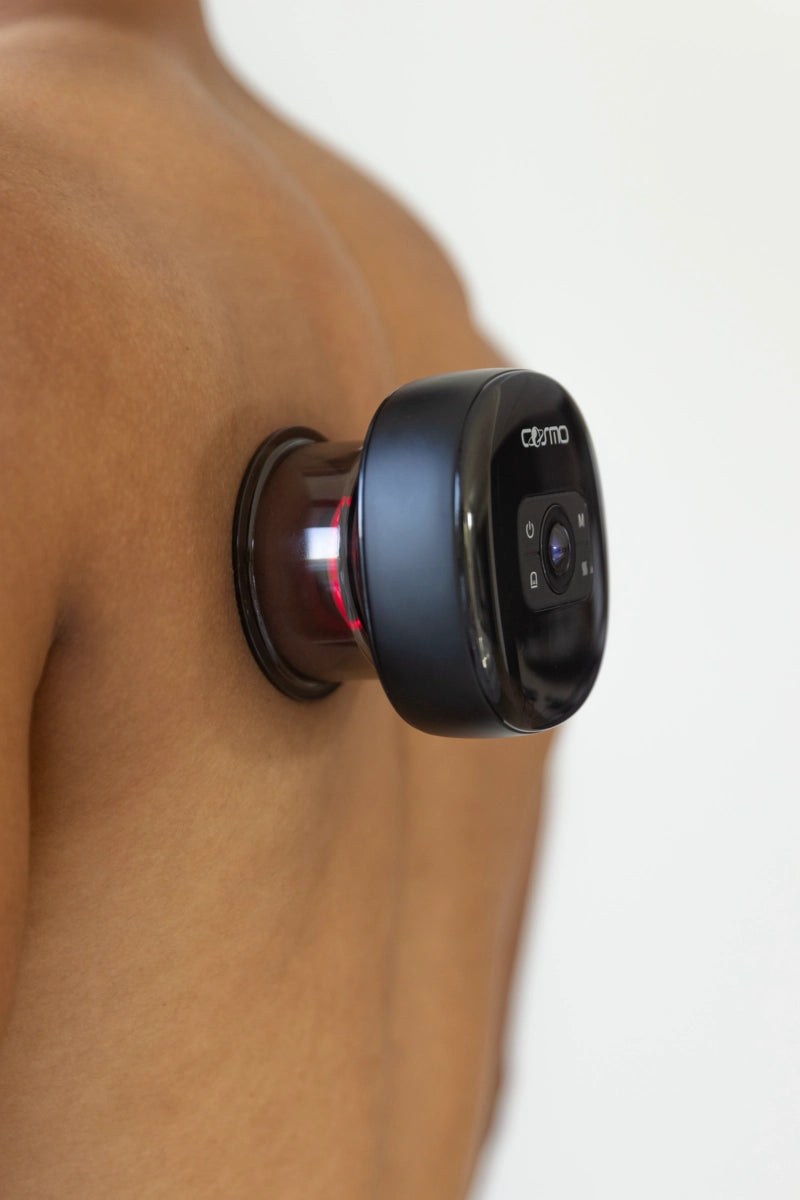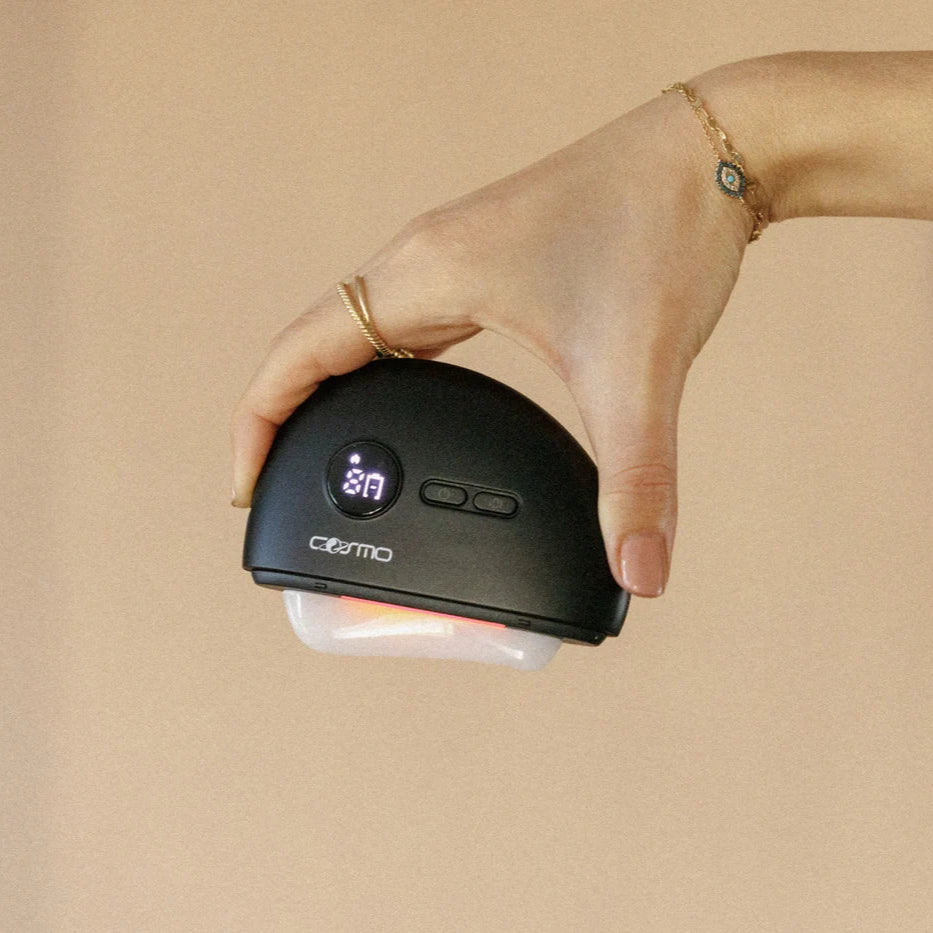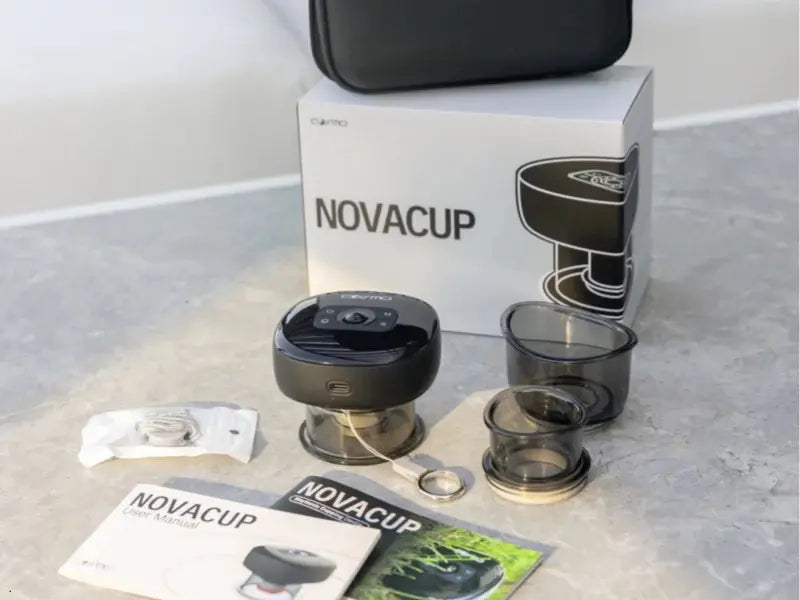From Olympic swimmers sporting circular bruises to wellness influencers, cupping therapy has surged in popularity as a natural method for easing tight, achy muscles. This ancient practice, also known as ventosa massage in some cultures, involves placing cups on the skin to create a vacuum that lifts tissue. The idea is that drawing blood to the surface helps release tension and promote healing in underlying muscles. Cupping is an age-old technique using suction to boost blood flow to an area, which may help relieve pain in the back, neck, and beyond. Many athletes have added cupping to their muscle recovery techniques, using it after intense workouts to speed up recovery. In this article, we’ll explain how to use cupping tools, explore how it works, and discuss its benefits for sore and tight muscles.

How Cupping Therapy Works
Cupping therapy is fundamentally simple: a cup is placed on the skin and suction is created inside it. The suction pulls the skin and underlying tissue upward into the cup, causing blood vessels to expand and burst at the surface. This process triggers your body’s healing response. Fresh blood rushes to the area to repair the perceived injury and carry away waste. The suction literally breaks tiny capillaries under the skin, and the body responds by sending healthier blood flow to stimulate healing at a cellular level. Cupping creates a controlled minor trauma that jump-starts circulation.
This increased blood flow and fluid exchange can help loosen fascia and reduce inflammation in the area. By lifting and separating those fascial layers, cupping restores glide between muscle and skin, which may explain the relief in muscle tightness and improved range of motion people often feel. Some traditional Eastern medicine explanations also suggest that cupping moves “stagnant energy” or “toxins” out of the tissues. For example, in Chinese medicine, it’s said to improve the flow of qi. The visible marks left by cups are essentially bruises formed by the suction. They usually fade within a week and, unlike a traumatic bruise, they generally aren’t very painful. After a session, muscles often feel more relaxed and flexible, similar to how they feel after a deep massage.
Types of Cupping and Techniques
Over millennia, different styles of cupping have evolved, but they all use negative pressure to decompress tissues. Dry cupping is the most common. The cup is simply placed on the skin with suction and left stationary for 5–15 minutes. In traditional practice, suction is created by briefly heating the air inside the cup or by using a hand pump. Either method forms a vacuum that pulls skin up into the cup. Another popular technique is running cupping, also known as cupping massage therapy, where oil or lotion is applied to the skin and the cup is moved or slid along muscle areas. This combines the suction with a massage-like motion, stretching muscle and fascia. Practitioners often use running cupping to treat larger areas or multiple trigger points, as it can cover more ground and further encourage blood flow. By contrast, wet cupping involves a small needle prick or incision in the skin before applying the cup, so that a bit of blood is drawn out under the suction. This is done with the belief of removing “toxins” or stagnant blood. Trained specialists usually perform wet cupping under hygienic conditions due to the minor bleeding.
Cupping can also be classified by the type of cup material and the method of suction generation. Modern cupping sets commonly use plastic cups with valves connected to a manual pump, or soft silicone cups that can be squeezed to expel air and create suction when placed on the skin. Silicone cups are particularly favored for cupping for tight muscles and cellulite massage since they glide easily with oil. Fire cupping with glass cups is still practiced as well. No matter the method, the depth of suction can be adjusted. Light cupping affects mostly the skin and superficial tissues, whereas strong suction pulls in deeper muscle tissue. Beginners or those with sensitive skin usually start with gentle suction for a shorter duration to avoid excessive soreness or skin damage.
Benefits of Cupping for Muscle Tension Relief
Beyond direct muscle effects, cupping tends to elicit a deep sense of relaxation in a lot of people. Lying still with warm cups on your back can feel calming, and the increase in blood flow may even trigger a parasympathetic nervous system response. This could be why many find cupping helpful for tension headaches or stress-related muscle tightness. Another notable benefit is that cupping is relatively low-risk when done properly. Aside from the superficial marks and temporary soreness, serious side effects are uncommon. It’s a drug-free approach, which appeals to those looking to avoid pain medications. Cupping can be performed as needed for flare-ups of muscle pain or on a regular maintenance schedule.
Massage and Cupping: A Powerful Combination
Many physical therapists and massage therapists incorporate cups into a standard massage session, either by prepping the tissue with massage and then applying cups. The rationale is that massage uses pressure to knead and relax muscles, while cupping uses negative pressure to lift and decompress muscles. Together, they attack tension from both directions. By first warming and loosening muscles with hands-on massage, and then using cupping to draw out deeper adhesions and increase circulation, therapists can achieve a more thorough release of tightness. This dual approach can be especially beneficial for chronic knots or very stiff areas that don’t fully yield to massage alone.
The massage strokes help distribute and soften muscle fibers, and then the suction encourages fresh blood to flood in, carrying oxygen and nutrients that aid recovery. The two therapies in tandem improve circulation, reduce inflammation, and draw out deeply held tension more effectively than either alone. A therapist might massage a client’s neck and shoulders to relieve surface tension, then place a few cups along the trapezius and upper back. The cups gently pull up the tissue, often producing a profound stretch feeling. When removed, the areas under the cups usually look more pliable and less congested.

How to Use Cupping Tools Safely at Home
One of the appeals of cupping therapy today is that you can do it yourself at home with the right equipment and precautions. If you’re wondering how to use cupping tools, here’s a simple step-by-step guide:
-
Prepare Your Tools and Space: Obtain a cupping set designed for home use, typically silicone or plastic cups with a hand pump. Make sure the cups are clean and dry. Choose a comfortable area where you can relax during treatment. It helps to have a mirror or a friend to assist with hard-to-reach spots.
-
Apply Oil or Lotion: For static cupping on one spot, oil is optional, but for moving cupping, you’ll definitely want to apply a thin layer of massage oil or lotion to the skin. This reduces friction and allows the cups to glide more easily. Even for stationary cups, a little oil can help create a good seal.
-
Place and Suction the Cups: Position the cup on the target area and create suction. With silicone cups, squeeze the cup, then press it onto the skin before releasing to create the vacuum. With pump cups, attach the pump and draw out the air until you feel a tug on your skin. You should see the skin rise into the cup and feel a tightness. Adjust the suction intensity to a comfortable level. It should not be painfully tight.
-
Treatment Time: Leave the cup(s) in place for about 5 to 15 minutes, but never longer than 15 minutes on one spot. If you are doing dynamic cupping, keep the cup moving continuously over the muscle for a few minutes, avoiding staying in one place too long. Watch for any excessive redness or pain; if the area becomes very uncomfortable or the skin starts to bruise too dark, release the suction sooner. Listen to your body’s signals.
-
Remove the Cups: To remove a cup, don’t just yank it off—this can hurt. Instead, release the suction by pressing a finger next to the cup’s rim to let air in. The cup should pop off easily. If you used a pump cup, you can also release the valve. After removing, you’ll likely see a round mark. Wipe off any excess oil.
-
Aftercare: It’s a good idea to stretch and rehydrate after cupping gently. The increased blood flow can leave you a bit dehydrated, so drink water. Keep the cupped areas covered and warm. The marks might be tender, but they shouldn’t be very painful. If they are, use less suction next time. Also, sanitize your cups after each use according to the manufacturer’s instructions. Good hygiene will prevent skin infections.
When using cupping tools at home, there are a few safety guidelines to keep in mind. Do not place cups over open wounds, broken skin, or actively inflamed areas. Avoid sensitive areas like the front of the neck or inner thighs where major blood vessels are superficial. Never leave cups on for more than 15 minutes in one spot, as prolonged suction can cause blistering. If you ever feel sharp pain, dizziness, or extreme discomfort, stop the treatment. It’s also wise to consult with a healthcare provider before starting self-cupping, especially if you have any medical conditions. While cupping is generally gentle, people on blood thinners or with bleeding disorders should avoid it unless a doctor clears it. Used responsibly, home cupping can be an empowering way to manage minor muscle tension and stress, complementing your other self-care practices.
Modern Innovations: Smart Cupping Devices
As cupping rides the wave of wellness trends, technology has entered the scene to modernize this ancient therapy. Smart cupping massager devices are now available, bringing electronic control and extra features to traditional cupping. These gadgets, often palm-sized and rechargeable, automate suction. No fire or manual pumps required. For example, Cosmo’s NovaCup is a popular smart cupping device that offers rhythmic suction modes, adjustable suction strength, and built-in heat and vibration. It even includes red light therapy to enhance circulation further.
Smart cupping devices also often have safety and convenience features like auto shut-off timers, digital displays for intensity levels, and even Bluetooth apps in some cases to control settings. The benefit of rhythmic suction modes is that the device can simulate the on-off technique some therapists use to stimulate blood flow further. By cycling pressure, it can prevent excessive marking and allow longer treatment times without numbing the area.
Cupping for Weight Loss: Myth or Reality?
Beyond muscle therapy, cupping has been linked to weight-loss and body-slimming claims. You might have seen spas advertising cupping for belly fat reduction or online tutorials about cupping for weight loss. What’s the truth here? The idea is that cupping’s stimulation of circulation and lymph drainage could boost metabolism, help break down fat, or at least aid in “detoxing” the body. In practice, moving cupping is sometimes used as a form of deep tissue massage to contour the body. It can temporarily plump up and then drain areas, which might give the appearance of a slight toning effect. However, cupping is not a magic bullet for shedding pounds. Any actual weight loss from cupping is likely indirect. If cupping helps reduce pain, you might be more active and burn more calories, or if it eases stress, it could decrease stress-related overeating.
Cupping Therapy for Cellulite Reduction
Cellulite is the dimpled, lumpy fat texture most visible on thighs and buttocks. It is a common cosmetic concern, and alternative therapies like cupping have been touted to tackle it. The buzz around cupping and cellulite has grown as more people share before-and-after pictures of smoother-looking skin. So, can cupping really reduce cellulite? The theory is that the suction and movement from cupping can increase circulation and lymphatic drainage in the affected tissue, perhaps temporarily plumping the skin and even breaking up some fat deposits or adhesions beneath the skin. Many therapists who specialize in cellulite treatments consider cupping one of the best approaches for cellulite, especially the technique of dry-moving cupping. This method essentially massages the area but with the lifting action of the vacuum, which might be more effective at improving blood flow than manual massage alone.
Researchers applied moving dry cupping to participants’ thighs twice a week for five weeks, and found a significant decrease in the appearance (grade) of cellulite compared to before treatment. After about 10 sessions, the women’s thigh skin looked smoother with less pronounced dimpling. This suggests that regular cupping can indeed make a visible difference, likely by swelling the tissue with blood and stretching out the fibrous bands that cause the puckering effect. Cupping’s effects on cellulite appear to be short-term improvements in skin elasticity and fluid reduction. Once you stop, the normal tissue architecture returns, and cellulite can reappear. When considering the best cupping for cellulite, it’s important to set realistic expectations. It can be a helpful tool to reduce the appearance of cellulite, but it probably won’t erase it, especially not severe cellulite.
Facial Cupping Benefits for Radiance
Unlike body cupping, facial cupping is typically done with very light suction, and the cups are continuously moved; the goal is not to leave marks, but to boost circulation and lymph flow in the skin. The result? A healthy glow and potentially some cosmetic perks. Among the touted facial cupping benefits are reduced puffiness, a brighter complexion, and even a temporary lifting or tightening effect due to increased blood flow. By stimulating microcirculation, facial cupping can help feed skin cells with oxygen and nutrients, supporting collagen production.
Other Natural Ways to Reduce Muscle Tension
While cupping therapy can be a valuable tool, it works best as one component of a holistic approach to muscle health. There are plenty of natural ways to reduce muscle tension that you can incorporate into your routine alongside (or instead of) cupping. Here are a few effective methods:
-
Stretching and Yoga: Regular stretching helps lengthen tight muscle fibers and improve flexibility. Practices like yoga or simple daily stretch routines can alleviate muscle stiffness and prevent knots from forming. Even taking 5–10 minutes to stretch your neck, shoulders, lower back, and legs can make a big difference.
-
Heat Therapy: Applying heat is a time-honored way to soothe tense muscles. A warm shower or bath, heating pad, or hot water bottle increases blood flow to tight areas, helping muscles relax and joints loosen up. For widespread tension or stress relief, consider a soak in an Epsom salt bath. The magnesium in Epsom salt is absorbed through the skin and can aid in muscle relaxation.
-
Regular Exercise and Movement: It might sound counterintuitive, but gentle exercise can prevent muscles from getting too tight. When we stay in one position too long, muscles shorten and stiffen. Incorporating movement throughout your day keeps blood flowing and muscles limber. Strengthening opposing muscle groups can also correct imbalances that lead to tension.
-
Breathing and Relaxation Techniques: Stress and muscle tension are closely linked. Practices like deep breathing, meditation, or progressive muscle relaxation can help calm your nervous system. When you’re stressed, muscles tend to unconsciously contract. Taking a few minutes to breathe deeply, do mindfulness meditation, or systematically tense and relax each muscle group can reduce overall muscular tension. This not only feels good mentally but also physically releases tightness.
-
Adequate Hydration and Nutrition: Dehydration can contribute to muscle cramps and tightness, so ensure you drink enough water, especially if you’ve been sweating or exercising. Certain nutrients play a role in muscle function. Magnesium and potassium, for example, help muscles contract and relax properly. Eating a balanced diet with plenty of fruits, vegetables, and whole foods supports muscle health. Some people find that magnesium supplements or topical magnesium oil help with nighttime muscle cramps or general tightness.
By combining these natural strategies with cupping therapy, you create a comprehensive self-care plan for your muscles.

The goal is to live with less pain and tension. Cupping therapy, with its roots in ancient practice and its continued use today, is proving to be a useful ally in that goal, helping to literally lift away the pressure and let our bodies breathe a little easier.
Sources
-
my.clevelandclinic.org Cleveland Clinic – “Cupping Therapy: Definition, Types & Benefits.” (overview of cupping therapy and its effects)
-
health.harvard.edu Harvard Health Publishing – “What exactly is cupping?” (2024 review noting cupping’s relief for musculoskeletal pain, with limited evidence quality)
-
healthline.com Healthline – “Does Cupping Get Rid of Cellulite?” (2015 pilot study finding moving dry cupping reduced cellulite grade after 5 weeks)
-
realsimple.com Real Simple – “Facial Cupping Has Many Benefits — Here’s Everything You Need to Know.” (expert summary of facial cupping benefits like reduced puffiness and softer fine lines)
-
cosmo.la Cosmo (Product Page) – NovaCup Smart Cupping Device Description (features of a smart cupping massager, including rhythmic suction, heat, vibration, and red light therapy)











